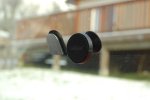Lots of good advice, but a "must have" for me that I've not seen mentioned is a way to read trouble codes.
The 3.6 L has a few sneaky sensors that can fail, and they aren't horrible if they do, but knowing the difference between a CEL that you can drive on and one that should warrant a look right away can be important on a trip. For instance, there's an oil pressure sensor that failed a few times on mine. Apparently, this sensor switches between "high pressure" and "low pressure" oil pumping, depending on what the computer tells it to do. If it fails, it defaults to "high pressure", which I understand has basically zero detrimental effects. But, you wouldn't know that unless you had a code reader. It's a big job to fix trailside, and so I wouldn't bother bringing a spare sensor, but I would want to check the codes every day to make sure that was the only problem my vehicle had. If the CEL is on and stays on because of a minor fault, it can mask a stack of other, potentially more major faults behind it, so checking every day can be a way of getting a bit more information to know the true vehicle status.
Perhaps a bit out of scope for the tool kit, but if going really remote (no internet) you may need to also have a code guide, though some readers provide this info for you in general terms. I use a Bluetooth-enabled $20 dongle from amazon paired to a Smart Phone.

 www.67d.com
www.67d.com



